都铎王朝的圣诞节
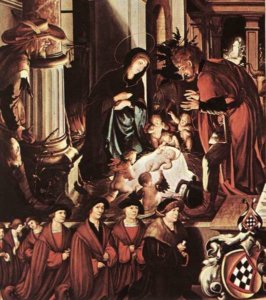
早在基督诞生之前,仲冬就一直是大众欢乐的时刻。 仲冬仪式的根源是12月21日的冬至--最短的一天--。 在这一天之后,白昼延长,人们热切地期待春天的回归,即生命的季节。 因此,这是一个既庆祝秋播结束又庆祝篝火被点燃以帮助加强 "不可征服的太阳"。
对全世界的基督徒来说,这段时间都在庆祝耶稣在伯利恒的马槽中诞生的故事。 然而,圣经中没有提到每年的时间,更没有提到耶稣诞生的实际日期。 即使是我们现在的日历,据说是计算从基督诞生开始的年份,也是由狄奥尼修斯在六世纪制定的,他是一个 "不懂计算 "的意大利僧侣,以对应有一个罗马节。
 奥贝里德祭坛画的细节,"基督的诞生",汉斯-霍尔拜因,约1520年。
奥贝里德祭坛画的细节,"基督的诞生",汉斯-霍尔拜因,约1520年。
直到4世纪,整个欧洲都可以在1月初到9月底之间的任何地方庆祝圣诞节。 是教皇朱利叶斯一世偶然想到了将12月25日作为耶稣诞生的实际日期。 这一选择显得既合理又精明--将宗教与现有的节日和庆祝活动混为一谈。 现在任何欢乐都可以归功于诞生基督,而不是任何古老的异教仪式。
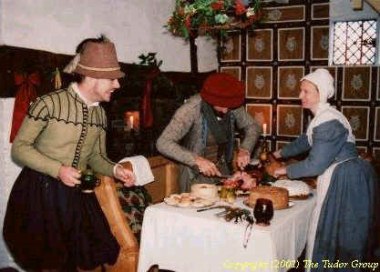
愚人节就是这样一个模糊不清的节日,它由 "误鲁尔王 "主持。 愚人节是一个不守规矩的活动,涉及大量饮酒、狂欢和角色转换。 误鲁尔王,通常是一个以懂得享受而闻名的平民,被选来指挥娱乐活动。 这个节日被认为起源于仁慈的罗马主人,他们允许他们的仆人要当一段时间的老板。
教会在圣尼古拉节(12月6日)至圣婴节(12月28日)期间,允许由同龄人选出的唱诗班男孩担任主教。 在这期间,被选中的男孩,象征着最低级的权力,将穿上完整的主教礼服,主持教会仪式。 许多大教堂都采用这一习俗,包括约克、亨利八世废除了男孩主教,但包括赫里福德和索尔兹伯里大教堂在内的一些教堂至今仍在继续这种做法。
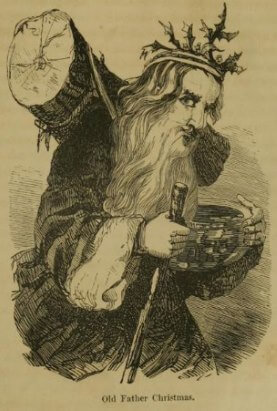
燃烧圣诞圆木被认为是源于早期维京入侵者的隆冬仪式,他们建造了巨大的篝火来庆祝他们的光明节。 Yule "一词在英语中作为圣诞节的替代术语已经存在了许多个世纪。
传统上,人们会在圣诞节前夕在森林里挑选一根大木头,用丝带装饰,然后拖回家,放在壁炉上。 点燃后,在整个圣诞节的12天里一直燃烧。 人们认为保留一些烧焦的残余物来点燃第二年的木头是幸运的。
无论颂歌这个词是否来自于拉丁语 卡劳拉 或法国人 卡罗尔 几个世纪以来,舞蹈元素似乎已经消失了,但歌曲被用来传达故事,通常是关于耶稣诞生的故事。 最早记录在案的颂歌集是在1521年,由Wynken de Worde编写,其中包括 野猪头卡罗尔。
See_also: 海德公园秘密宠物公墓
颂歌在整个都铎时代非常盛行,是庆祝圣诞节和传播耶稣诞生故事的一种方式。 然而,庆祝活动在十七世纪戛然而止,当时清教徒禁止包括圣诞节在内的所有庆祝活动。 令人惊讶的是,颂歌几乎已经绝迹,直到维多利亚时代恢复了 "旧英国圣诞节 "的概念,其中包括传统瑰宝如 牧羊人在夜间看守羊群的时候 和 冬青和常春藤 以及介绍了大量的新作品-------。 马槽里的小城啊,伯利恒的小城。 - 仅举几例。
圣诞节的12天对于土地上的工人来说是一个最受欢迎的休息时间,在都铎时代,这些工人应该是大多数人。 除了照顾动物之外,所有的工作都会停止,在犁地星期一,即第十二夜之后的第一个星期一重新开始。
12月 "有严格的规则,其中之一是禁止纺纱,这是妇女的主要职业。 鲜花被隆重地放在车轮上和周围,以防止使用。
See_also: 绞刑的历史在十二天里,人们会拜访邻居,分享和享受传统的 "碎羊肉"。 碎羊肉包括13种材料,代表基督和他的使徒,通常是干果、香料,当然还有一点切碎的羊肉--以纪念牧羊人。
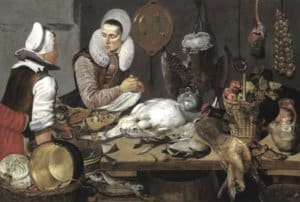
严肃的宴会应该是皇室和贵族的专利。 火鸡大约在1523年首次被引入英国,亨利八世是第一批把火鸡作为圣诞宴会的一部分来吃的人之一。 这种鸟的受欢迎程度迅速提高,很快,每年都可以看到大群的火鸡从诺福克、萨福克和剑桥郡步行到伦敦;这一旅程他们可能早在8月就开始了。
都铎时期的圣诞派的确是一道风景,但并不适合素食者享用。 这道菜的内容包括火鸡、鹅、鸡、鹧鸪和鸽子的馅料。 所有这些都被放在一个被称为棺材的糕点盒里,周围还有带关节的野兔、小鸟和野鸡。 被称为chewets的小派有掐头去尾,使它们看起来像小白菜或丘瓦特。
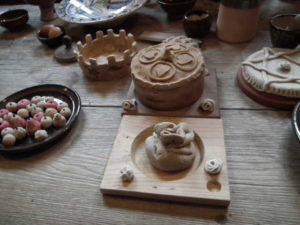 都铎王朝的圣诞餐桌的馅饼
都铎王朝的圣诞餐桌的馅饼
Wassail "这个词来源于盎格鲁-撒克逊语 "Waes-hael",意思是 "完整 "或 "健康"。 这个碗是一个大的木制容器,可以容纳多达一加仑的由热麦芽、糖、香料和苹果制成的潘趣酒。 这种潘趣酒可以与朋友和邻居分享。 在Wassail碗的底部放置一块面包皮,然后将其放在碗里。提供给房间里最重要的人--因此今天的祝酒词是任何饮酒仪式的一部分。

